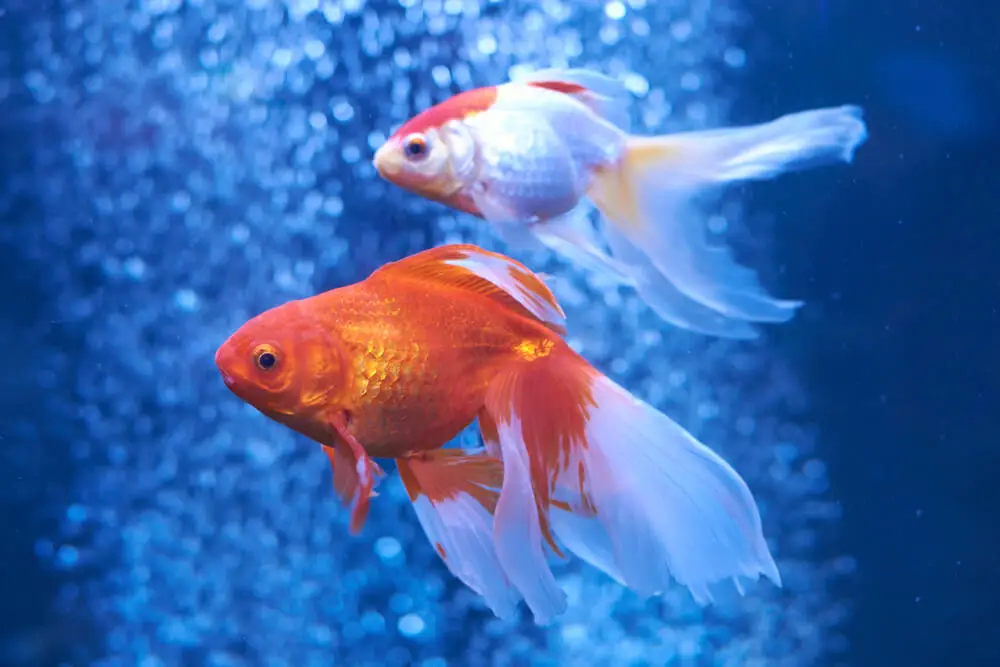Are you thinking about adding some extra shimmer to your freshwater tank? Then, Aquarium Moonlight may be the answer! These blue LED lights can create a beautiful, calming atmosphere in your aquarium, but is it really a good idea?
In this post, we’ll dive into the five key things you should consider before adding moonlight to your freshwater tank setup.
1. Is It OK To Have Moonlight For Freshwater Aquariums?

In short, it’s generally OK to have moonlight in a freshwater aquarium.
Moonlight, or blue LED lights, can be a beautiful and calming addition to a freshwater aquarium. These lights mimic the moon’s natural light and can create a soothing atmosphere for tank habitants.
However, it’s essential to remember that moonlight should not be your tank’s only light source.
Fish and plants need a full spectrum of light, including both blue and white, to grow and thrive. Without a full spectrum of light, your fish and plants may suffer from poor growth and unhealthy coloration.
It’s also worth noting that moonlight should be used in moderation. Too much blue light can cause stress and discomfort in your fish, leading to abnormal behavior and even illness.
It’s generally recommended to use moonlights for no more than 8-12 hours per day (preferably during the night hours), depending on the needs of your specific fish and plants.
Learn More: Should Fish Tank Light Be On All The Time?
In addition to providing the right spectrum and intensity of light, it’s also important to consider the timing of your moonlight use.
Some fish and plants are more sensitive to light changes than others, so it’s a good idea to gradually introduce moonlight to your tank and observe the reactions of your fish and plants.
If you notice any unusual behavior or negative impacts, it’s best to reduce the amount of moonlight or turn it off completely.
Overall, while moonlight can be a beautiful and calming addition to a freshwater aquarium, it’s important to use it wisely, along with other sources of light, to ensure the health and happiness of your fish and plants.
2. How Will Fish React To Moonlight In The Aquarium?
Fish generally do not have strong reactions to moonlight in the same way that they do to other types of light. In fact, some fish may even be attracted to the blue glow of moonlights, especially if they’re nocturnal species.
However, it’s still important to monitor your fish’s behavior and ensure they’re not showing any signs of stress or discomfort when the moonlights are on.
Signs of stress or discomfort in fish include abnormal behavior, rapid breathing, listlessness, or loss of appetite. If you notice any of these signs, it’s best to turn the moonlights off.
It’s also worth noting that some fish may be more sensitive to light changes than others, so it’s a good idea to gradually introduce moonlight to your tank and observe the reactions of your fish.
If you have a mixed community tank with different fish species, some may be more affected by the moonlights than others. In this case, it may be necessary to adjust the timing and intensity of your moonlight use to accommodate the needs of all your fish.
3. How Will Aquarium Plants React To Moonlight In The Aquarium?
Aquarium plants will generally not be significantly affected by moonlight as long as they receive the proper spectrum of light for their species.
However, it’s worth noting that moonlight alone will not be sufficient for most plants to grow and thrive. Plants need a full light spectrum to photosynthesize effectively and produce energy, including both blue and white wavelengths.
Without a full spectrum of light, plants may suffer from poor growth, unhealthy coloration, and even death.
It’s also important to consider the intensity and duration of your moonlight use and the specific needs of your plants.
Some plants, such as low-light species like Anubias and Java Fern, may survive with minimal lighting, including moonlight. However, most plants still need a full light spectrum for optimal growth and health.
4. Do Fish Need Moonlight In The Freshwater Aquariums?
Fish don’t necessarily need moonlight in their freshwater aquariums. As long as they get 8-12 hours of light daily, they’ll be fine in the remaining hours of darkness.
In fact, fish don’t need moonlight to sleep. They’ll naturally go to sleep at night when the lights are turned off and wake up again in the morning as they sense light.
However, adding blue moonlight to your freshwater aquarium isn’t going to harm your fish.
As long as the blue lighting is calm enough to make them feel like it’s nighttime, they’ll sleep comfortably in their favorite spots.
Plus, moonlights can create a more natural, calming environment for your fish, especially if you’re keeping nocturnal species.
Nocturnal fish are more active at night and may benefit from the blue glow of moonlights, which can help create a more realistic habitat and encourage natural behavior like eating and exploring the tank.
One great example of a nocturnal fish species is the Pleco. If you keep blue lights on during the night, you might catch a glimpse of your Pleco moving around and cleaning the tank, munching on algae growth on decorations.
Blue moonlights are more commonly used in saltwater tanks than freshwater tanks, mainly because they facilitate the growth of corals and enhance their coloration. They also help create a more realistic ocean habitat for the fish.
The personal preference of reef tank owners for blue light is also one of the reasons why blue moonlight is so popular in saltwater tanks.
5. Is It Good To Have Moonlight In Your Freshwater Aquariums?
Overall, moonlight can be a nice addition to a freshwater aquarium, as long as it’s used in moderation and only during the night hours.
| Pros Of Blue Moonlight: | Cons Of Blue Moonlight: |
| Helps nocturnal fish species to carry out their nocturnal tasks | Some fish may remain active and could have difficulty in sleeping if the light is too intense |
| Tank decorations and colors of the fish look unique and different from normal | Additional electric bill since the light remains on at the night |
| Allows the aquarist to observe the fish’s behavior at night in low light | You can’t rely only on blue light because fish and aquarium plants also need a white light |
Reasons to have blue moonlight in the tank:
- Enhancing the natural beauty of your tank during the nighttime.
- Helping your nocturnal fish to move around in the tank by adding blue light.
- Getting the opportunity to see the beauty of fish during the night time hours.
Reasons to not have blue moonlight in the tank:
- If you want to avoid paying an extra electric bill running the moonlights (moonlight is optional and not a requirement for fish or plants).
- You think your aquarium fish or plants will not react properly to adding blue light. (In general, darkness is required for some fish species to ensure they sleep well.)
Wrapping Up
In short, moonlight can be a beautiful and calming addition to a freshwater aquarium as long as it’s used in moderation in the nighttime and in conjunction with normal white light in the daytime.
It’s also important to keep an eye on your fish and plants and ensure they’re not showing any signs of stress or discomfort.
Hi! I’m Praveen Ghoshal, the founder of eFishkeeping.com. Inspired by my Dad, I got interested in fishkeeping when I was a kid. Since then, I have been involved with this hobby. Currently, I have 3 fish tanks at our home, and I enjoy this hobby with my full family. Read more about me here.








